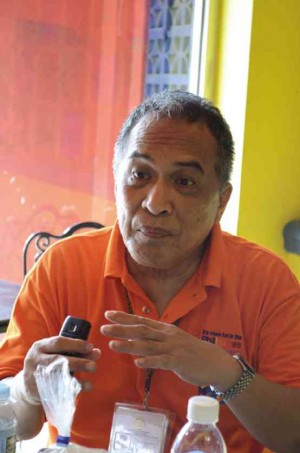
My wanderlust, this desire to travel, started at a young age. My father contributed to it because he could decide in an instant that he wanted to go somewhere. There were times my siblings and I would wake up to find ourselves at the back of our Chevy station wagon in Baguio in our pajamas.
When my father invited us out for a ride in our diesel box-car Mercedes, sometimes we’d end up in Bulacan by the river to eat and to swim, our provisions deftly packed for us by my mother. And so I learned to pack and go quickly for those times when he said the magic word “Tara!” (Let’s go!).
‘Travel Time’
But this need to know about our food and our culture probably began when I watched an episode of the late Susan Calo Medina’s “Travel Time,” where she featured a spun-sugar artisan in Pampanga who created baskets and flowers out of pulled sugar.
There was nothing to protect the woman’s hands from the hot sugar threads, unlike today’s pastry chefs who have tempered gloves to protect their hands.
That TV show also had another artisan who baked an ensaymada that was so huge and enriched with so many egg yolks. Since Susan’s first director for “Travel Time” was a friend, Gerry Guillen Bagsit, I asked her to bring me to a taping of the show.
The episode was set at Casa Manila in Intramuros where a recreation of a Christmas celebration at the turn of the 20th century was being shot.
I was introduced to Susan by Gerry, but since the production was in progress there wasn’t time to ask about that Pampanga episode. Instead I watched one scene that had Glenda Barretto, whom I hadn’t met, kneeling at the altar in her glorious Filipiniana dress, with a beautiful lace veil on her head and a glittering rosary in her hands.
“Quiet!,” the order was shouted as the cameras rolled. Later, I quietly left as it was late at night. Come to think of it, I still have to look for that artisan.
Medina ‘ensaymada’
Susan and I met occasionally at tourism events, at the Salcedo weekend market where she sat with the organizers from her Barangay Bel Air in Makati, and at food festivals.
She waited for us when my siblings and I got lost on the way to the Medina ancestral home in Arayat, Pampanga, to sample Pampango cooking on the invitation of her son, Marc. And she welcomed us to her Makati home to witness how the Medina ensaymada was made for the book “Panaderia: Philippine Breads, Biscuits and Bakery Traditions” that hopefully will be out in February.
The last time I talked with Susan was at the culinary competition “Food Showdown” in September last year. We sat together as we relaxed in between my judging chores and her interviews with organizers for her show.
We planned as we always did to go together to Butuan City, once the capital of Agusan del Norte, so she could show me her hometown. I also asked her if she would put on makeup before her interview. She then took out her big sunglasses, wore them and said that she just put her makeup on.
Negros tours
Another loss to travel and tourism was Bambi Borromeo who conducted food and culture tours of Negros Occidental. The first time I met the former advertising man was when my Food magazine team went to Bacolod and Silay.
Writer Abe Florendo was doing the feature story and he introduced me to Bambi as the man who arranged places we were to cover, such as the Hacienda Rosalia of the Gastons in Manapla and the Negros Showroom in Bacolod.
The adobong milyonaryo with lots of garlic cooked by Monsignor Gigi Gaston and the creative food displayed at the Showroom are on my “have to taste them again” list. Abe and Bambi at the time were recovering from a car accident, grateful that they survived the mishap. When it isn’t your time, Bambi said, then it isn’t.
His time came, however, four months ago. He and Susan both died of aneurysm.
I could have seen Bambi one last time had I joined the “Panaderia” team when it went to do research in Bacolod and Silay cities a month before he died.
The guided tour had become his “newfound career,” according to Abe. Bambi, “with his big, sonorous voice… spiced up his talk of places and landmarks with gossipy anecdotes and little-known historical facts.”
Abe also introduced Bambi to the librarian of the Lopez Museum and Library where they dug up more information about the history, places and people of Negros.
Abe suggested that Bambi “collate his spiels into a handbook,” but that never got done. Negros and the country would have been richer for it.
E-mail the author at pinoyfood04@yahoo.com